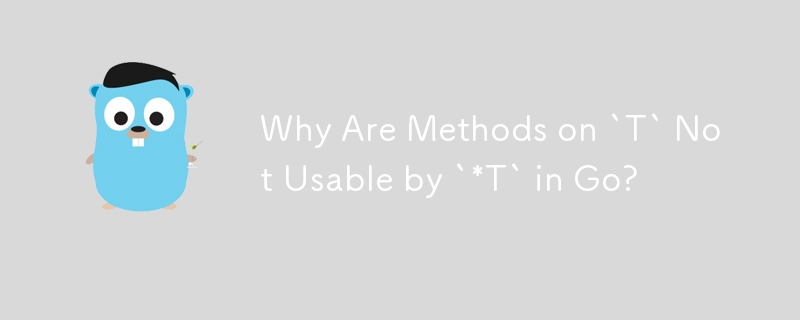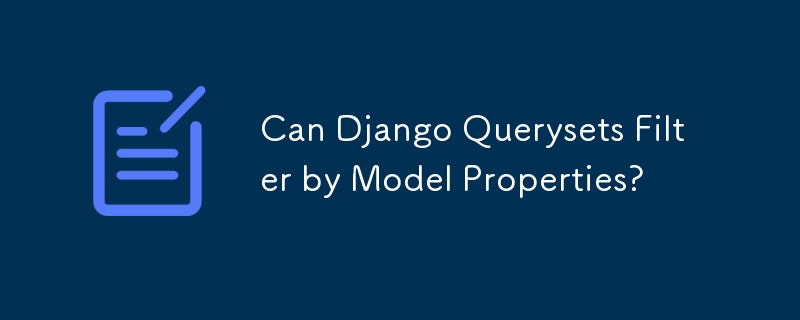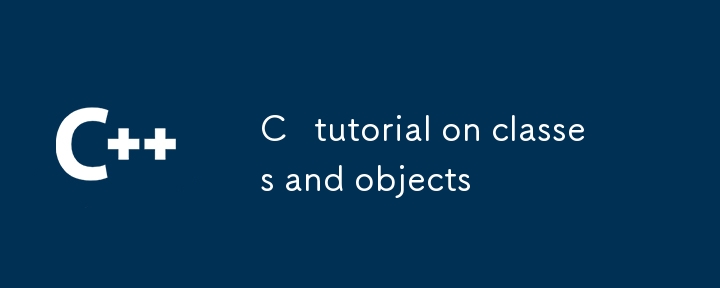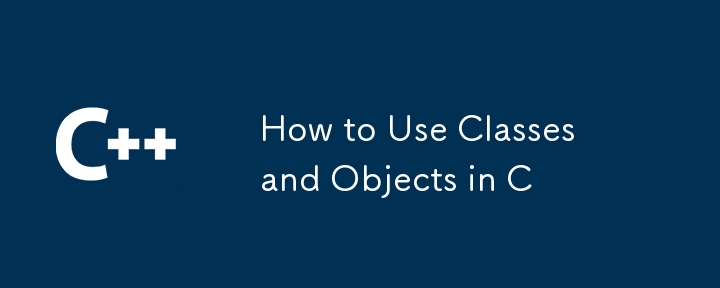
Course Introduction:Why Go Disallows Method Sets on *T to Be Used by TIn Go, methods defined on a value type T can be used by both T and *T, while methods defined on...
2024-10-31 comment 0 996

Course Introduction:Why Go Discriminates Method Sets on T and *TIn Go, methods defined on a type T can be used by both T and T, while methods on T cannot be used by...
2024-10-31 comment 0 665

Course Introduction:Filtering Django Querysets by Model Property: Understanding LimitationsWhile Django querysets offer extensive filtering capabilities, they cannot directly filter by model properties. Properties are custom attributes defined in model classes and calcu
2024-10-17 comment 0 643

Course Introduction:In C, a class is a user-defined data type, a method to encapsulate and manipulate data, and an object is a specific instance of the class. 1. The class keyword is used to define the class, including member variables and member functions, and control visibility through access modifiers; 2. The object can be directly declared, defined or initialized by batches; 3. The constructor is used to initialize the object, without a return type, and can be overloaded; 4. Encapsulate the data protected through private, provide public method access and add verification logic. Mastering classes and objects is the basis for understanding OOP characteristics such as inheritance and polymorphism.
2025-06-30 comment 0 577

Course Introduction:The core of using classes and objects in C is to understand the basic concepts of classes as templates and objects as instances, and to master the encapsulation, construction and destruction mechanisms. 1. Classes are defined using class or struct. The default access rights are different. Member variables and functions can be set to private and public respectively. 2. Objects can be created through the stack or heap. Objects on the heap need to be manually released to avoid memory leaks. 3. Constructors are used to initialize objects, and destructors are used to clean up resources; 4. Complex relationships can be built between classes through combinations, making the program more flexible and easy to maintain. By mastering these key points, you can write object-oriented code with clear structure and clear logic.
2025-07-15 comment 0 220

Course Elementary 13770
Course Introduction:Scala Tutorial Scala is a multi-paradigm programming language, designed to integrate various features of object-oriented programming and functional programming.

Course Elementary 82279
Course Introduction:"CSS Online Manual" is the official CSS online reference manual. This CSS online development manual contains various CSS properties, definitions, usage methods, example operations, etc. It is an indispensable online query manual for WEB programming learners and developers! CSS: Cascading Style Sheets (English full name: Cascading Style Sheets) is an application used to express HTML (Standard Universal Markup Language).

Course Elementary 13143
Course Introduction:SVG is a markup language for vector graphics in HTML5. It maintains powerful drawing capabilities and at the same time has a very high-end interface to operate graphics by directly operating Dom nodes. This "SVG Tutorial" is intended to allow students to master the SVG language and some of its corresponding APIs, combined with the knowledge of 2D drawing, so that students can render and control complex graphics on the page.

Course Elementary 24589
Course Introduction:In the "AngularJS Chinese Reference Manual", AngularJS extends HTML with new attributes and expressions. AngularJS can build a single page application (SPAs: Single Page Applications). AngularJS is very easy to learn.

Course Elementary 27446
Course Introduction:Go is a new language, a concurrent, garbage-collected, fast-compiled language. It can compile a large Go program in a few seconds on a single computer. Go provides a model for software construction that makes dependency analysis easier and avoids most C-style include files and library headers. Go is a statically typed language, and its type system has no hierarchy. Therefore users do not need to spend time defining relationships between types, which feels more lightweight than typical object-oriented languages. Go is a completely garbage-collected language and provides basic support for concurrent execution and communication. By its design, Go is intended to provide a method for constructing system software on multi-core machines.
PHP nested function and anonymous function scope issues
2017-05-18 10:45:34 0 1 733
Generate Brocken metadata classes on alpine Docker image via protobuf
2024-02-17 15:33:51 0 1 529
Decoding your application's database connection: Looking for help
2024-04-02 12:19:18 0 2 687
Interface Document - How does the java background interface conveniently return restful data?
2017-05-27 17:39:59 0 2 844
What is the difference between PHP class declaration and instantiation?
2017-05-16 13:10:23 0 2 566